![]()
![]()
![]()
Use LEFT and RIGHT arrow keys to navigate between flashcards;
Use UP and DOWN arrow keys to flip the card;
H to show hint;
A reads text to speech;
52 Cards in this Set
- Front
- Back
|
waxing crescent moon
|
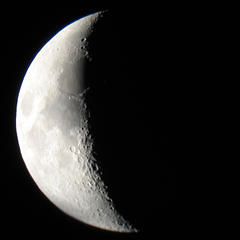
What phase of the moon is this?
|
|
|
new moon
|
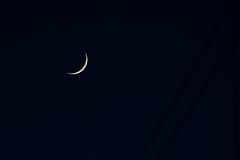
What phase of the moon is this?
|
|
|
first quarter moon
|
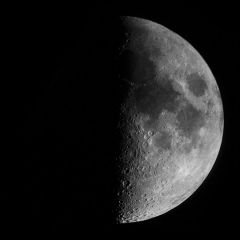
What phase of the moon is this?
|
|
|
waxing gibbous moon
|
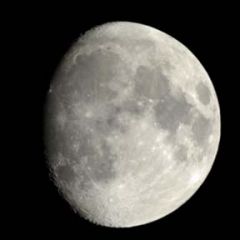
What phase of the moon is this?
|
|
|
full moon
|
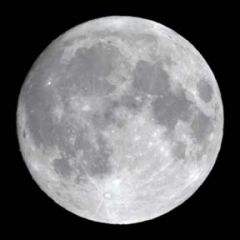
What phase of the moon is this?
|
|
|
waning gibbous moon
|
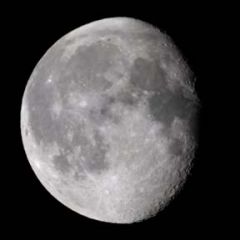
What phase of the moon is this?
|
|
|
Third quarter moon
|

What phase of the moon is this?
|
|
|
an umbra
|

What is this a picture of?
|
|
|
___________ is the study of the stars
|
Astronomy
|
|
|
________ is called an asterism; an area in the sky where the set of stars is called a ___________.
|
Pattern
constellation |
|
|
Is polaris the brightest star?
|
No, vega is the brightest.
|
|
|
What is the ecliptic tilted at?
|
23.5 degrees
|
|
|
equivalent to longitude on Earth’s equator and is located in the celestial sphere
|
Right ascension
|
|
|
degrees up or down from equator; equivalent to latitude on Earth
|
Declination
|
|
|
divides the sky into northern and southern hemispheres, just as the Earth’s equator divides the earth into two hemispheres.
|
Celestial equator
|
|
|
This artificial, earth-based view of the heavens to make celestial maps by pretending that the stars are attached to the inside of an enormous hollow shell with which the Earth is the center.
|
Celestial sphere
|
|
|
When the earth spins around on its axis, it called what?
|
a rotation
|
|
|
When the earth spins around the sun, its called what?
|
a revolution
|
|
|
Motion of the celestial bodies is apparent in time-exposure photographs.
|
Diurnal or daily motion
|
|
|
___________ is when the stars never go below the horizon. They NEVER set.
|
Circumpolar
|
|
|
How long does it take for the earth to go around the sun once?
|
364 and 1/4 days
|
|
|
How many years does it take to have a leap year?
|
every 4 years
|
|
|
T or F
Every 100 years there is NO leap year. |
True
|
|
|
What is the name of the point directly overhead?
|
Zenith
|
|
|
What is the line that goes North to South and through the Zenith.
|
meridian
|
|
|
What is the sidereal period?
|
It is the motion with respect to the stars
|
|
|
T or F
The solar day is a little longer than the sidereal period. |
True
|
|
|
Every ___ degrees of longitude around the globe begins a new time zone. There are ____ time zones.
|
15
24 |
|
|
iii. Going from one time zone to another usually requires you to change the time on your wristwatch by exactly an _____ .
|
hour
|
|
|
What causes the seasons?
|
THe tilt of the Earth's rotation axis with respect to the ecliptic causes the seasons. They aren ot caused by the changing distance from the Earth to the Sun that results from the shape of Earth's orbit.
|
|
|
– From day to day, the Sun traces a straight path on the celestial sphere.
- makes a closed circle bisecting the celestial sphere. - when the Earth orbits the Sun in a plane. |
Ecliptic
|
|
|
– the day that the Sun rises farthest south of east is around December 21st each year. Also the day when the Sun rises to the lowest height at noon.
|
Winter solstice
|
|
|
the sun crosses the celestial equator heading northward.
|
Vernal equinox
|
|
|
– 3 months after vernal equinox, around June 21st, the Sun rises earliest, farthest north of east, and is highest in the sky at noon. The day of the year in the northern hemisphere with the most daylight.
|
summer solstice
|
|
|
when there is the same hours in the day as the night.
|
equinox
|
|
|
i. A slow circular motion of the Earth’s axis of rotation.
ii. Earth wobbles |
precession
|
|
|
The _____ is in synchronous rotation with the earth. _____ side changes, but the ____ side stays the same.
|
Moon
Dark far |
|
|
________ period of the moon is when it goes in a full circle around the Earth. Full moon to full moon.
|
Sidereal
|
|
|
_____ moon is when there is two full moons in 1 month, the second moon is the blue moon.
|
Blue
|
|
|
What is it called when the moon is tilted 5 degress from the ecliptic?
|
Eclipse
|
|
|
What is it called when the brightest full moon often darkens to a deep red?
|
Lunar eclipses
|
|
|
What is it called when broad daylight is transformed into an eerie twiglight, as the sun seems to be blotted from the sky?
|
Solar eclipse
|
|
|
part of the shadow where all direct sunlight is blocked by the Earth.
|
Umbra –
|
|
|
the shadow is where the Earth blocks only some of the sunlight.
|
Penumbra –
|
|
|
when the mOon passes through only the Earth’s penumbra, is easy to miss. The moon still looks full, just a little dimmer than usual and sometimes slightly reddish in color.
|
Penumbral eclipse –
|
|
|
when just part of the lunar surface passes through the umbra, a bite seems to be taken out of the Moon
|
Partial eclipse –
|
|
|
When the Moon travels completely into the Umbra.
|
Total eclipse –
|
|
|
a tiny crescent
|
New moon
|
|
|
7 days after new moon; more illuminated
|
Waxing crescent moon –
|
|
|
half of the moon is illuminated
|
First quarter moon-
|
|
|
rounded on both sides
|
Waxing gibbous moon –
|
|
|
we see all of the illuminated moon
|
Full moon –
|

